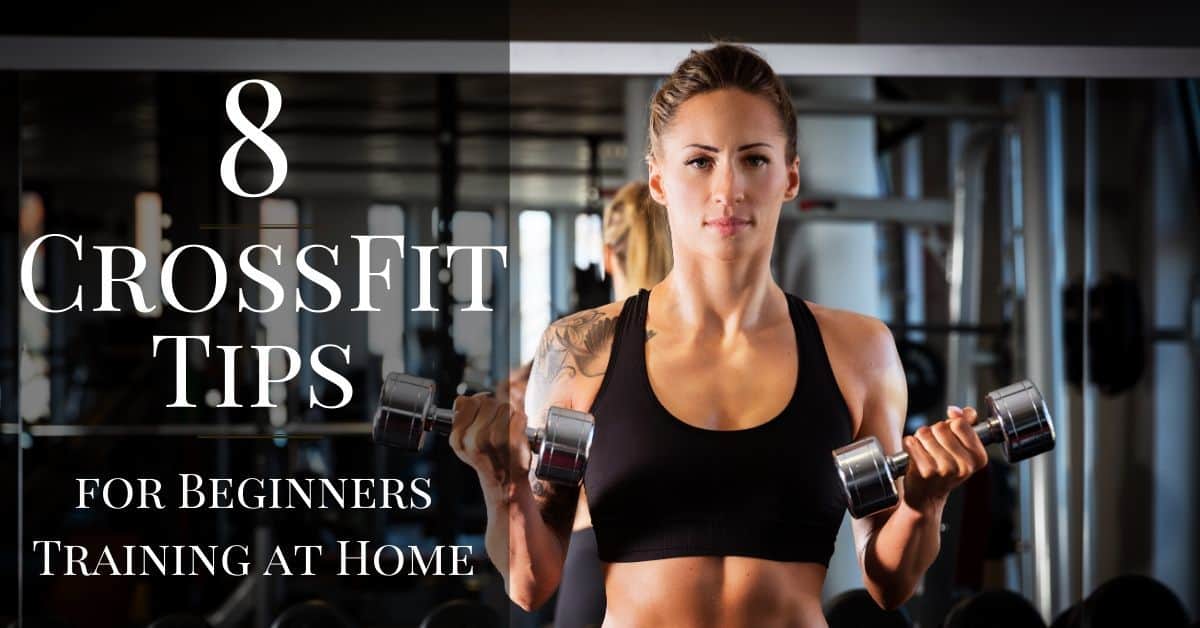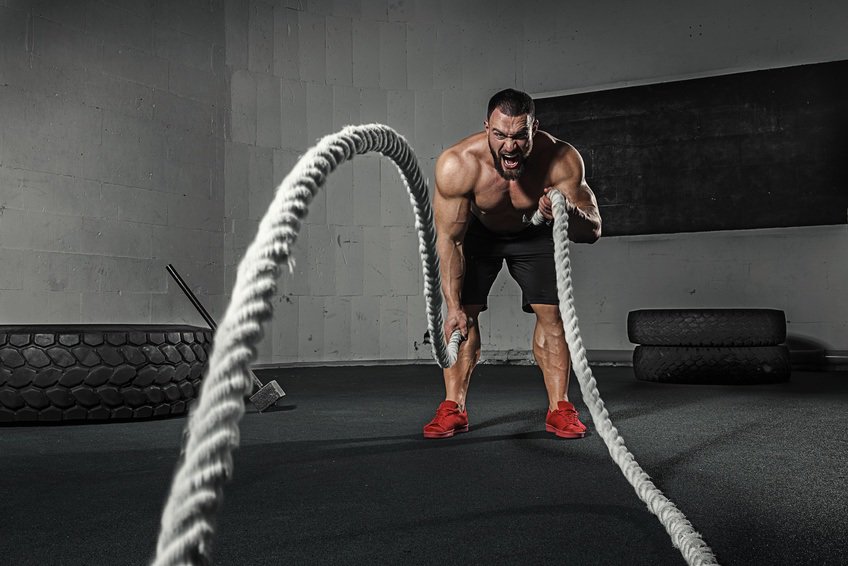8 CrossFit Tips for Beginners Training at Home

 Many people flock to CrossFit. It’s known for giving stellar results but is also considered one of the more challenging ways to exercise. Luckily, with the right CrossFit tips for beginners, even these daunting workouts can become more accessible.
Many people flock to CrossFit. It’s known for giving stellar results but is also considered one of the more challenging ways to exercise. Luckily, with the right CrossFit tips for beginners, even these daunting workouts can become more accessible.
If you’re wondering what CrossFit is and for CrossFit beginner tips that can help you excel, here’s what you need to know.
What is CrossFit?

CrossFit is an approach to physical fitness and exercise. It mainly focuses on functional training, where the exercises are meant to improve your ability to handle daily tasks. For example, squatting, pulling, and pushing motions are major features of CrossFit workouts.
But it’s also incredibly high intensity. This approach to interval training is challenging, often both physically and mentally. However, it’s also very adaptable, ensuring that CrossFit beginners can scale down while experienced CrossFit practitioners can amp up the difficulty.
Additionally, it doesn’t always rely as heavily on rep counts, as many other workouts do. Instead, it can instead focus on spending a specific amount of time doing the exercise combined with the degree of exertion. It’s a bit of a different approach but is nonetheless effective for many.
8 CrossFit Tips for Beginners Training at Home
If you like the idea of CrossFit but prefer to forgo the gym, you’re in luck. With a little preparation and a good plan, you can enjoy great CrossFit workouts for beginners from nearly anywhere. Here are eight tips for CrossFit at home beginners to get you started.
1. Get the Right CrossFit Shoes

Of all of the beginner CrossFit tips, here’s one no one should ignore. While CrossFit doesn’t require a ton of equipment, there is one area where you should invest. Before you start any at-home CrossFit workouts for beginners, get yourself a high-quality pair of CrossFit shoes.
Your shoes give you a foundation as you exercise. When they have proper arch, foot, and ankle support, and are otherwise well-made and keep you stable. Plus, a great CrossFit shoe promotes better body alignment, which could make you more comfortable and lower your risk of injury.
2. Maintain Proper Form

Any exercise is more effective when you maintain proper form. But did you know that it makes your workout safer, too? It does.
Improper form increases your odds of injury. Considering that CrossFit is meant to push you to your physical limits, fatigue can set in quickly. If your form suffers as you tire, you might stress muscles, ligaments, or joints in ways that they can’t handle.
When you’re doing a CrossFit program for beginners at home, make monitoring your form a priority. Do your workout in front of a full-length mirror so that you can keep an eye on your movements and position. Tune into your body to track how it feels as you move and if any areas are experiencing undue stress.
3. Video is Your Friend for Learning Foundational Moves
Even the best-written CrossFit guide for beginners isn’t an ideal place to start. It can be hard to visualize a movement, especially if it isn’t particularly familiar.
Instead of relying on descriptions, consider finding resources that also feature videos. That way, you can see exactly how a movement should look. Plus, you might get tips for executing it right, such as which muscles should feel it and which ones shouldn’t.
If you want an overview of some of the exercises commonly found in these home workouts, the CrossFit website is a great place to start. They have a variety of videos showing individual moves, making it easier to understand what you should do.
4. Take Your First CrossFit for Beginners Home Workout Slow

When you’re ready to tackle your first CrossFit at home workouts for beginners, take it slow. Even if you’ve reviewed the foundational moves, you’re still just starting out. Now isn’t the time to go full bore and risk an injury. You want to increase your familiarity first.
Plus, you may not initially know how much you can handle. Generally, those new to working out have to guess how much weight they can lift for a specific number of reps or amount of time. By going slow, you can test out your capacity. Then, you’ll be more likely to be on target when it comes time to up the intensity.
5. If It Hurts, Don’t Do It
Many workouts cause a degree of discomfort. They are physically challenging, so they don’t always feel spectacular in the moment.
But, “no pain, no gain” is a myth. If it genuinely hurts to do a movement, you should stop doing it immediately. Often, that pain is a signal that something isn’t right. You could be setting yourself up for injury or may already be injured.
Assess when the pain occurred and consider the potential causes. You may need to modify a move or forgo it entirely, depending on what is happening.
6. Recovery Days Are a Critical Part of the Process
Some exercise newbies assume that, if working out three to five days a week is good, working out seven days a week must be better. But, for the vast majority of people, that simply isn’t true.
Your body needs a chance to recover, so taking a couple of days off each week isn’t a bad idea. That way, it can repair any tissue damage that occurs when you exercise and get a reprieve from mechanical stresses. Plus, it can give you a mental break, too, which can be critical for long-term success.
7. Be Vigilant of Diet Creep

Healthy eating is a foundation of the CrossFit lifestyle. As you work out more, you may need to adjust your diet. Exercise does burn calories, for one. For another, additional muscle mass means your caloric needs shift.
However, just because you start CrossFit doesn’t mean you can eat whatever you want, whenever you want, and in whatever quantity you want. While you may be better equipped to shoulder the occasional indulgence, you still need to make smart choices. Otherwise, you may not achieve your health and fitness goals.
8. Monitor Your Body Composition Over Other Metrics
Metrics like your weight or clothing size can be deceiving when it comes to your physical health. CrossFit can cause you to put on muscle as well as burn fat. As a result, your weight and clothing size won’t always go down, even if you are getting in better shape.
If you’re overweight and want to keep an eye on your progress, consider tracking your body composition. That way, you can see how much fat you’re burning and separate that from weight gains caused by muscle building or fluctuating hydration levels.
